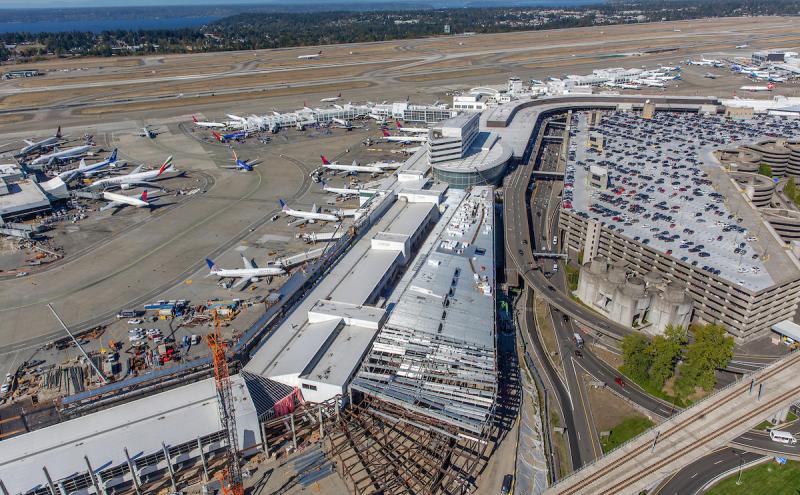Originally published January 2021; Updated October 2025
The Port of Seattle is an essential gateway to over 130 global destinations and a leader in moving people and cargo across the country and around the world. As an economic engine for our region, Port operatoins helps to support over 205,000 jobs and $12 billion in wages throughout the region.
What's the purpose of a port authority and why do ports focus on economic development?
Ports are unique public entities to foster economic development and create jobs within their communities. The Port of Seattle was founded with the mission of promoting economic opportunities and quality of life in the region by advancing trade, travel, commerce, and job creation in an equitable, accountable, and environmentally responsible manner.
The Port of Seattle forms what’s called a “special purpose government” that is authorized by the State of Washington to operate public assets of statewide significance, including a world-class airport, commercial fishing facilities, cruise terminals, and marine cargo terminals. The Port and its staff are responsible for managing these facilities efficiently to benefit you, the people of the region, and the state.
Read the Century Agenda to learn about the Port's mission and strategic plan
What are the Port's budget priorities?
The Port of Seattle's budget and five-year capital development plan consistently supports the local, regional, and statewide economy by drawing on the economic opportunity that flows from developing aviation, maritime commerce, fishing industries, and critical trade and travel infrastructure. We also build on our strategies to protect the environment and promote equity, diversity, and inclusion in all the work we do.
Who pays for the operation of these facilities and port investments?
We're glad you asked — the following sources of funding are allowed by law: taxes, fees, and operating revenues. The Port can also borrow funds with bonds.
1. Property taxes
As a public Port in Washington, the Port may exercise a limited authority to collect funds through property taxes. The Port keeps the levy paid by taxpayers low by maximizing operational revenue and fees. During the annual budget process, the Commission reviews and approves the use of the tax levy. Read more about this year's tax levy.
2. Fees and operating revenues
Port funds come from operating revenue and fees from businesses and tenants who lease their facilities. These fees could include marine terminal leases, real estate and tenant leases at Port facilities, airport landing fees, passenger fees, and moorage fees at marinas. The Port also receives a number of grants, tax dollars, and interest earnings.
Did you know? By law, the airport is self-funded and is supported by fees, federal grants, and operating revenues, rather than tax dollars. Essentially, those who use the airport contribute to airport operation through ticket and parking fees (travelers), and airport space rental, (dining and retail, airlines, and federal agencies).
For a more detailed breakdown, read Who Pays for SEA Airport?
3. Bond proceeds
Ports also generate funds from bond proceeds. A bond is a contract between two parties: companies or governments that issue bonds because they need to borrow large amounts of money, and investors. Bonds have a maturity date; this means that at some point, the bond issuer must pay back the money to the investors. Ports may issue a variety of municipal bonds for capital construction projects. Ports primarily issue revenue bonds, which are guaranteed by the operating revenues generated by the Port. The Port also issues general obligation bonds that are repaid with revenue from property taxes. Bonds provide the funds for a port district to make a major, long-term investment in infrastructure — an investment that typically benefits a community for decades to come.
Where does the money go?
Community and transportation projects
Thank you for making an investment in these efforts through your tax dollars:
- Building maritime infrastructure
- Managing projects that will protect the environment
- Ensuring efficient transportation and mobility of goods through the region
- Supporting local communities through workforce development, partnerships, grants, airport communities, and tourism
- Debt obligations for certain bonds
Learn about programs to be funded with this year’s tax levy that provide support to our most vulnerable communities.
Capital projects
Capital projects make up the largest share of the Port’s spending. Learn about the Port’s planned capital investments.
How do I get involved?
During the annual budget process, the Port follows a transparent public process and we welcome and encourage community input through public briefings.







